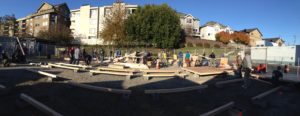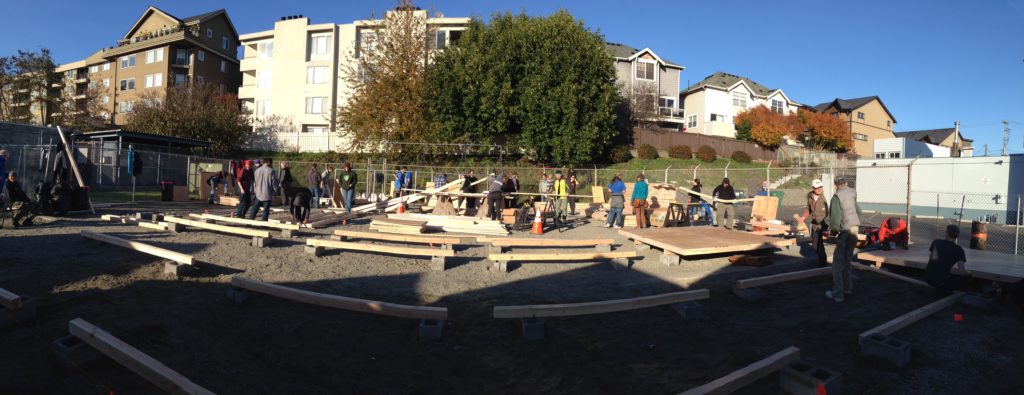Nickelsville Homeless Encampment approved through Seattle Interim Use Policy
Case Study: Published | Updated: | | Seattle, Washington | 1125039001- Category
- category_listing(s)
- Building Type
- Accessory Structure
- Innovation
- Zoning for transitional homeless encampment
- Jurisdiction
- Seattle, Washington
- Parcel
- 1125039001
- Officials
- William Mills | City of Seattle, Construction & Inspection
- Team
-
Sharon Lee
|
developer
William Mills | approving-official
Tulalip Tribes | builder
Youthcare | builder
Sarah Smith | builder

Ballard Nickelsville is one of the first two transitional homeless encampments to be permitted on City-owned land through Seattle’s innovative ‘Transitional Encampment as an Interim Use’ policy, which also added specific regulations for their approval and operation to the Seattle Land Use Code. The encampment, which consists of five Tiny Homes, 18 tents, and a communal kitchen and donation tent, serves roughly 28 of Seattle’s homeless at any given time.
Ballard’s homeless encampment was the first of three projects initially approved by the City to use Seattle’s Ordinance 124747: ‘Transitional Encampment as an Interim Use’ (Seattle Municipal Code 23.42.056). These innovative land-use code regulations allows transitional homeless encampments (i.e. tent cities/tiny home villages) to legally exist on approved City owned, private, and/or educational institution land in any zone for up to one year with the possibility of a 12 month extension.
The approval process for the Ballard encampment involved following the prescriptive path outlined in the code, which includes Community Outreach standards, Operation standards, and Location/Site standards. Based on the location requirements, Seattle’s Department of Construction and Inspections reviewed approximately 135 vacant city-owned lots of which three were initially chosen, one of them being the site at Ballard. While there was concern about the transitional encampment’s location raised by the larger Ballard community, Type I approvals are not subject to formal appeal processes under the Land Use Code, and therefore the site went on to be issued a Type I Master Use permit with Nickelsville as its Operator and LIHI as the case manager.
The five tiny homes that exist on the site were able to bypass building permits due to their size, being under 120 sq ft., and the remaining 18 tent shelters and shared community spaces similarly did not need specific approval.
| Code Requirement | Compliance Path |
|---|---|
| Seattle Municipal Code (SMC) 23.42.056:“Transitional Encampment as an Interim Use” | LIHI and Nickelsville followed the prescriptive path for establishing a ‘transitional encampment’ as outlined in SMC 23.42.056. This included complying with Community Outreach, Operation, and Location standards. |
